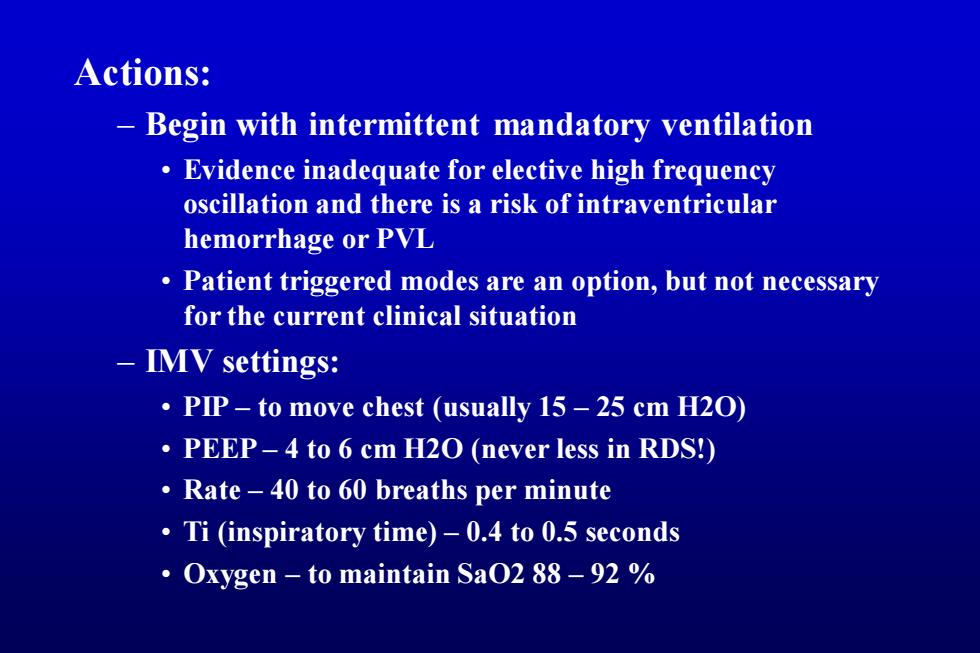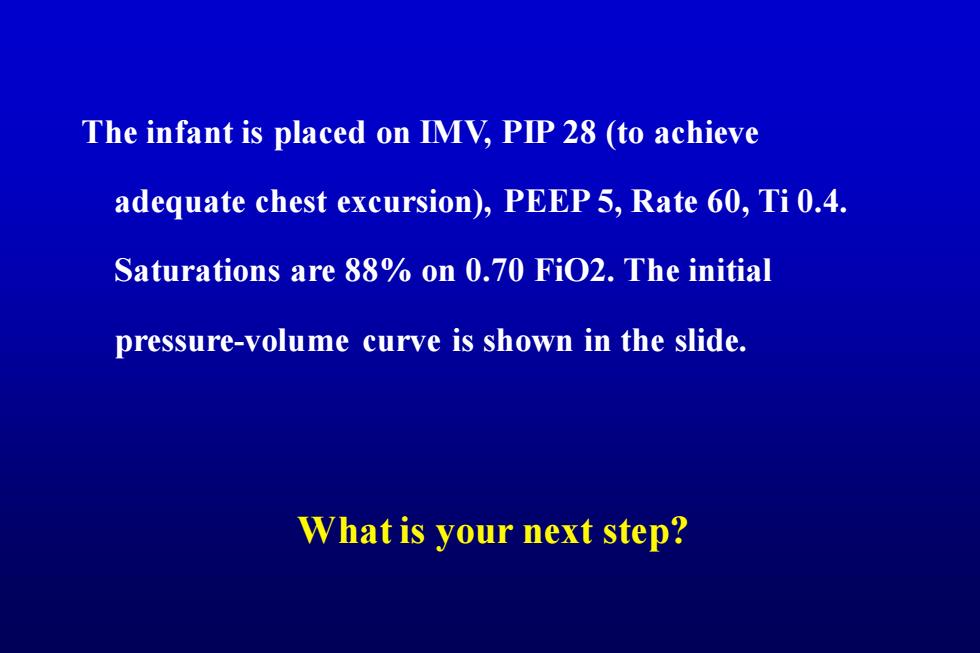
Actions: Begin with intermittent mandatory ventilation Evidence inadequate for elective high frequency oscillation and there is a risk of intraventricular hemorrhage or PVL Patient triggered modes are an option,but not necessary for the current clinical situation -IMV settings: PIP-to move chest (usually 15-25 cm H20) PEEP-4 to 6 cm H20 (never less in RDS!) Rate-40 to 60 breaths per minute Ti (inspiratory time)-0.4 to 0.5 seconds Oxygen to maintain SaO2 88-92
Actions: – Begin with intermittent mandatory ventilation • Evidence inadequate for elective high frequency oscillation and there is a risk of intraventricular hemorrhage or PVL • Patient triggered modes are an option, but not necessary for the current clinical situation – IMV settings: • PIP – to move chest (usually 15 – 25 cm H2O) • PEEP – 4 to 6 cm H2O (never less in RDS!) • Rate – 40 to 60 breaths per minute • Ti (inspiratory time) – 0.4 to 0.5 seconds • Oxygen – to maintain SaO2 88 – 92 %

The infant is placed on IMV,PIP 28 (to achieve adequate chest excursion),PEEP 5,Rate 60,Ti 0.4. Saturations are 88%on 0.70 FiO2.The initial pressure-volume curve is shown in the slide. What is your next step?
The infant is placed on IMV, PIP 28 (to achieve adequate chest excursion), PEEP 5, Rate 60, Ti 0.4. Saturations are 88% on 0.70 FiO2. The initial pressure-volume curve is shown in the slide. What is your next step?